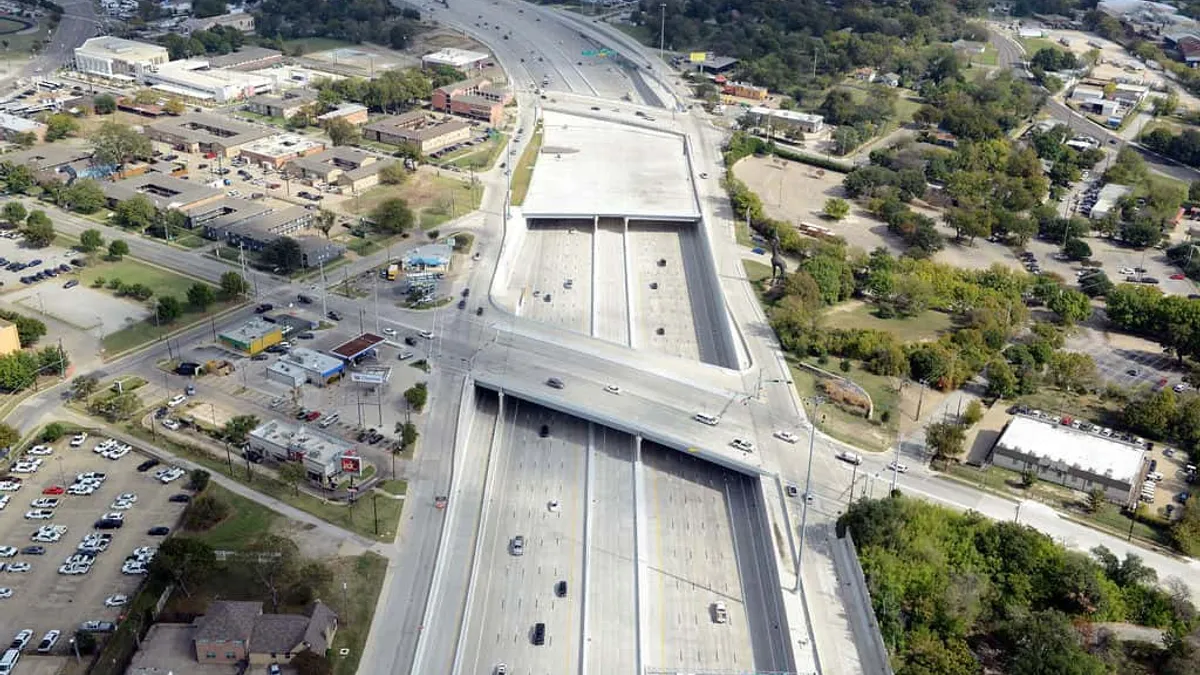Dive Brief:
- The Texas DOT on Nov. 30 announced the completion of a $666 million effort to widen I-35 in south Dallas, known as the Southern Gateway Project, to improve the drive for commuters coming in and out of the city.
- The design/build contractors for the project were Pegasus Link Constructors, a Fluor/Balfour Beatty joint venture, according to the project website. The work entailed widening Highway 67 and the eastbound lanes of I-35 as well as building reversible non-tolled express lanes.
- On the same day, the Southeast Connector Project near Dallas-Fort Worth also broke ground. It’s a 16-mile, $1.6 billion effort to widen I-20 and I-820 and rebuild interchanges between the two freeways and Highway 287. South-Point Constructors, a joint venture with Kiewit Infrastructure South and Austin Bridge & Road, landed the design, build and maintenance contract.
Dive Insight:
Construction on the 11-mile Southern Gateway Project started in 2018 and finished on time, per the project website. The goal of the rebuild is to improve safety, provide congestion relief and improve system linkage on a corridor that’s ranked among the most congested in Texas.
Still outstanding is some construction work on the deck park covering I-35 near the Dallas Zoo. The deck over the highway itself is complete, and now private funds are being raised to build out the 5-acre park on top. It will feature green space, a stage pavilion and amphitheater, restaurants and shops.
“The Southern Gateway illustrates how a highway project can help reconnect and enhance communities,” said State Senator Royce West in the Texas DOT press release. "This project, which finished on time and on budget, will serve southern Dallas well for decades to come."
The rebuild was partially funded through the Clear Lanes Initiative, a Texas DOT effort to address traffic jams in the most affected metropolitan areas. Clear Lanes projects are now included in the state’s $85 billion Unified Transportation Program, a key 10-year planning tool.
Southeast Connector launches
The Southeast Connector Project aims to address another top congested area identified in the UTP: the Fort Worth area, one of the country’s fastest growing cities. The goal is to relieve traffic delays and facilitate trade, increase safety and improve efficiency. It will tie in the east and southeast part of Tarrant County — the state’s third most populated county — to the central area where Fort Worth is located.
The Southeast Connector represents the Texas DOT Fort Worth District’s largest investment in transportation infrastructure to date, the agency said. It is projected to be finished by 2027, according to Texas DOT.
"The Southeast Connector project has afforded increased economic opportunities for businesses located right here in our community, and will continue to do so as construction advances,” said State Representative Nicole Collier in the Texas DOT press release.














